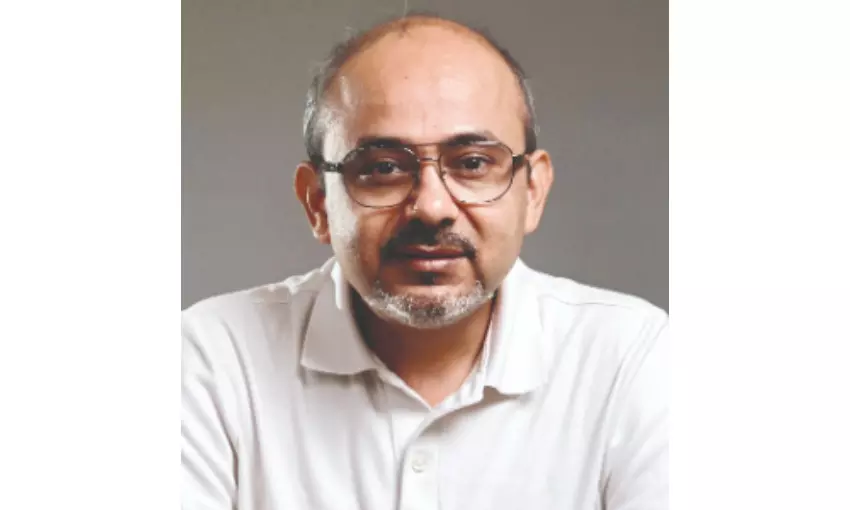From Sarayu to Sangam: Why Sanjay Singh’s ‘padayatra’ still matters

I have realised, somewhere between the blistering heat of Uttar Pradesh and the steady rhythm of our own footsteps, that India’s most defining political acts don’t usually come wrapped in grand speeches. They come disguised as simplicity: someone walking, someone refusing to take rest, someone deciding that presence is more powerful than shouting. These aren’t dusty memories from a long-gone era; they’re living, breathing strategies that still shape our public life. And I say this not as a distant observer but as someone walking shoulder-to-shoulder with Sanjay Singh ji on the “Rozgar Do, Samajik Nyay Do Padyatra,” from the Sarayu to the Sangam - twelve long days where history feels like a companion rather than something in textbooks.
One thing I have often felt (and perhaps I’m biased because of the closeness I have to these movements) is that our political ancestors understood something subtle: moral pressure, when carried out publicly and patiently, moves mountains that brute coercion can’t even scratch. Gandhi showed this most dramatically. The Salt March - such an oddly modest act when you think about it - was basically a long walk to pick up salt. Yet it rattled an empire. The British had the paraphernalia of control: rifles, courts, jails, proclamations. Gandhi had, well, resolve and a walking stick. And the moral battlefield was his.
Vinoba Bhave, years later, walked relentlessly through the heart of rural India asking landowners to part with a bit of their land for the landless. Sure, the Bhoodan movement didn’t eliminate inequality in the dramatic way critics like to remind us of. But something softened during those conversations under banyan trees, class hostility melted just a notch, and land reform became a shared duty rather than merely a bureaucratic directive. You can’t ignore such shifts simply because they don’t translate neatly into statistical charts.
And I still remember reading accounts of the JP Movement and feeling the pulse of the streets in those pages. Those marches were more than logistics - they were a signal that ordinary citizens could gather the courage to challenge authoritarian excess. Students, workers, farmers, everyone walked not because they were told to, but because the moment called them. That energy toppled more than a regime; it reinvigorated the belief that collective resistance still had muscle.
Now, I find myself - quite literally - inside that same tradition. This is the first time in years that I’ve experienced such a movement from the inside, not as a commentator but as a participant. And walking day after day with Sanjay Singh ji, talking to villagers who stop us with stories of unemployment, delayed recruitments, stalled dreams - it’s impossible not to notice how personal the struggle feels on the ground. You can’t scroll past someone’s pain when it’s being told to you under a neem tree with dust swirling at your ankles.
There’s something almost poetic about the padyatra’s route. From the Sarayu to the Sangam - two rivers that carry not just water but centuries of memory, poetry, ritual, and identity. When a movement physically links these spaces, the message instantly deepens. Employment and social justice stop sounding like policy categories. They feel like moral duties, intertwined with the land and the people who have lived on it for generations.
UP’s youth are simmering under the weight of joblessness, halted exams, recruitment delays, and the silent humiliation of being told to “wait.” As UP Co-Incharge, I’ve heard these voices repeatedly, but hearing them while walking beside them - sharing food, sitting on charpoys, standing in school grounds that feel abandoned - changes your sensitivity entirely. A padyatra forces you to slow down enough to listen. And listening, I’ve come to believe, is a form of respect that politics desperately needs. We listened to many broken hearts, one of them was elderly gentleman who has been recorded as dead in the database of the Uttar Pradesh govt, and thus his pension was stopped. This was just one, there are many such heart wrenching stories, which no one in the system ever bothered to pay attention to.
Let me say something uncomfortable but honest: padyatras don’t automatically carry moral force. People are sharper than politicians imagine. When a walk is choreographed merely for public relations, the public tunes out almost instantly. But when it’s powered by genuine conviction, when leaders put their bodies on the line, quite literally, the conversation shifts.
If the padyatra continues to grow in authenticity and scale, it may reset the political conversation in Uttar Pradesh. It could push the state machinery to confront unemployment not as a talking point but as a crisis. It might amplify the voices of Dalits, OBCs, Muslims, youth, women, the rural poor - people who often appear in political rhetoric but rarely in political priority.
One thing I am sure of: democracy doesn’t breathe in television studios or social media reels. It breathes on roads like these. In dust. In sweat. In conversations that happen without microphones. Social media trends vanish faster than an afternoon breeze, but a leader walking from the Sarayu to the Sangam leaves behind a trail of stories, stories that families will repeat long after the hashtags fade.
( Author is Aam Aadmi Party’s Co-Incharge for Uttar Pradesh, Incharge of AAP Overseas)



